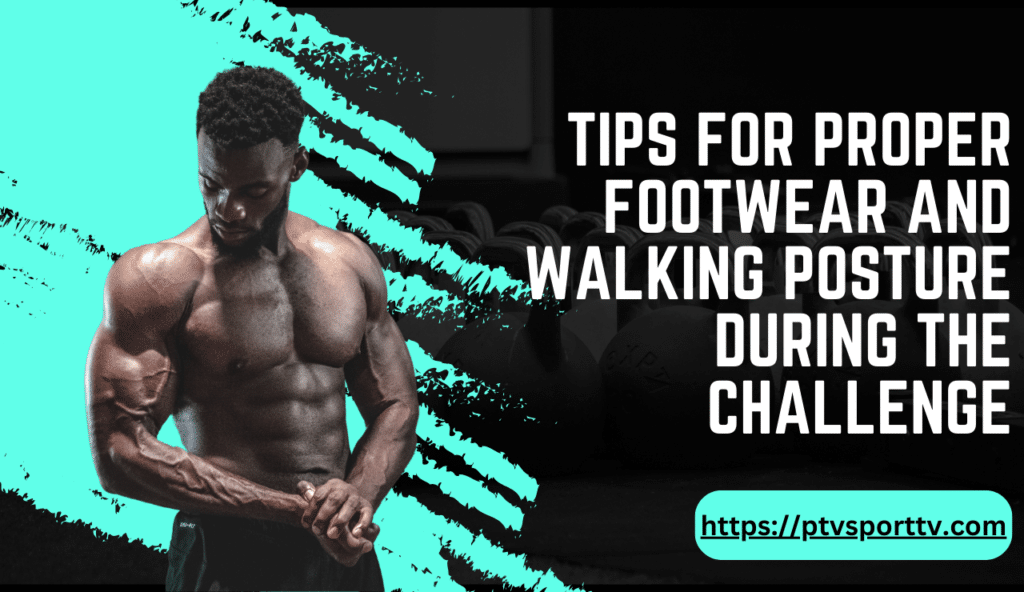Start by getting excited about the upcoming 30-day walking challenge. Highlight the transformative potential of this journey and it is designed for people looking for a sustainable way to lose weight.
When introducing the challenge and encouraging readers to set realistic goals for the month, the goal is to motivate and guide participants in a positive and achievable way. 30-Day Walking Challenge for Weight Loss.
Motivation to set realistic goals:
Define realistic goals: Encourage readers to consider their current fitness level and lifestyle. Goals should be challenging yet achievable. For example, if someone is relatively sedentary, a goal might be to start with a 15-minute walk each day and gradually increase.
Consider the time commitment: Recognize that everyone’s schedule is different. Suggest goals that fit into our daily routine, making it easy to commit. This may mean less walking on busy days and longer walks on more restful days.
Highlight the health benefits: Remind participants that the goal is not just weight loss, but overall health improvement. Mention benefits such as improved mood, increased energy, and improved heart health.
Trackable Progress: Encourage the use of a fitness tracker or simple journal to track daily progress. Visually representing accomplishments can be motivating.
Adaptability: Emphasize the adaptability of the challenge. If one misses a day or encounters unexpected challenges, one can pick up where one left off without getting discouraged.
Building Confidence:
Reinforce the idea that every step counts. Small successes lead to big successes. The goal is to gradually build confidence, making the challenge an enjoyable and rewarding experience.
Closing Invitation:
Conclude the introduction by inviting the reader to embark on this journey with positive thinking. Let them know that the challenge is a shared experience, and that they are not alone. Encourage them to celebrate every milestone, no matter how small. Remember, the key is to create a welcoming and empowering environment that encourages participants to take the first step toward a healthy lifestyle.
The Primary Role of the Foot in Walking
Walking is a complex biomechanical process, and the feet play an important role in providing the necessary support and propulsion. They are the initial point of contact with the ground, absorb shock and conform to different surfaces. Here is a drawbacknts to take the first step toward a healthy lifestyle.
Weight distribution: When we walk, our body weight is distributed across our feet. This distribution of weight affects the stress on different parts of the foot, including the heel, arch and ball.
Shock Absorption: The feet act as shock absorbers, reducing the impact forces generated with each step. This is very important to prevent excessive stress on joints and tissues.
Adaptation to Earth: Different levels of walking require different responses from the feet. Whether on soft grass, hard pavement, or uneven trails, the feet adjust to maintain stability and balance.
Importance of proper footwear
Arch Support: The foot has natural arches that provide support and distribute weight. Proper footwear is designed with arch support to maintain the natural shape of the foot and prevent problems such as overpronation or supination.
Cushioning: Walking on hard surfaces can create impact forces. Shoes with adequate cushioning provide a protective barrier, reducing stress on joints and soft tissues.
Stability and Alignment: The right shoes offer stability, keeping the foot in alignment during the walking cycle. This is important to prevent misalignment problems that can lead to discomfort and injury.
Prevention of foot problems: Ill-fitting or inadequate shoes can lead to a variety of foot problems, including blisters, calluses and bunions. Proper footwear prevents these problems and ensures overall foot health.
Improved Performance: With proper support, feet can function better. This not only prevents injuries but also enhances the overall walking experience, allowing individuals to walk longer distances comfortably.
Choosing the Right Shoes
Size and Fit: Emphasize the importance of choosing shoes that fit well, with plenty of toe room and a heel.
Activity specific shoes: Different activities may require specific footwear. Walking shoes, for example, provide specific features for walking comfort.
Regular assessment: Encourage regular assessment of shoe condition and fit. Shoes should be replaced when signs of wear and tear appear.
By understanding the fundamental role of the feet in walking and the support provided by proper footwear, individuals can make informed choices that contribute to a more comfortable and injury-free walking experience.
Tips for Proper Footwear and Walking Posture during the Challenge

Head Alignment:
- Straight and level: Make sure your head is straight and level. Imagine a straight line extending from the crown of your head to the ground.Prevent inclining your head either forward or backward.
Shoulder Position:
Relax and back:
- Relax your shoulders: Keep your shoulders relaxed, not tense. Let them move naturally with your arms.
- Lateral alignment: Your shoulders should be comfortably aligned with your torso. Avoid leaning forward.
Torso and Spine:
- Upright Posture: Maintain a straight and neutral spine. Imagine a string gently pulling you up above your head.
Arm swing:
- Natural Swing: Let your arms swing naturally with the rhythm of your steps. Make sure the movement comes from your shoulders.
Elbow flexion:
- 90-degree angle: Aim for a 90-degree bend at your elbows. This comfortable position contributes to more efficient progress.
Hip Alignment:
- Hips Facing Forward: Keep your hips facing forward. Avoid excessive twisting or bending of the hips.
Stride Length:
- Natural Stride: The length of the stride should feel natural and comfortable. Avoid overstriding, which can lead to inefficient walking and possible discomfort.
Foot placement:
- Heel to Toe: Land on your heel and roll toward the toe with each step. This promotes a smooth and energy-efficient gait.
look forward:
- Look Ahead: Keep your gaze straight ahead. Constantly looking down can strain your neck and affect your overall posture.
Breathing:
- Deep Breaths: Breathe deeply and rhythmically. Proper breathing increases oxygen intake, supporting endurance. 30-Day Walking Challenge for Weight Loss.
Using the Checklist
- Early Awareness: Begin by paying attention to each element of the checklist during your walk.
- Gradual Adjustment: Make gradual adjustments to your posture. Forming new habits can take time. Regular checks: Review the checklist periodically to ensure consistent good posture.
- Listen to your body: If you feel discomfort or pain, reassess your posture and make necessary adjustments.
Benefits of Proper Walking Posture
- Reduced stress: Maintaining proper posture distributes the impact of walking more evenly, reducing stress on specific muscles or joints.
- Increased endurance: Efficient posture contributes to better energy conservation, allowing you to run longer distances with less fatigue.
- Injury Prevention: Proper alignment reduces the risk of injuries associated with poor posture.
Position walking as a form of exercise that becomes more effective with proper posture
Walking as a form of exercise becomes more effective with proper posture, emphasizing its effects on overall health and well-being. Proper posture while walking ensures that the body is properly aligned, reducing stress on muscles and joints. 30-Day Walking Challenge for Weight Loss.
It increases walking efficiency, leading to better muscle engagement and improved cardiovascular benefits. Emphasize how maintaining good posture can prevent discomfort and injury, making the walking experience more enjoyable and sustainable.
Connecting the dots between posture, exercise effectiveness, and long-term health goals can motivate individuals to prioritize and maintain proper walking as an integral part of their fitness routine.
How to Building Stamina?

Capacity building involves gradually increasing your body’s ability to withstand physical activity over a longer period of time. In the context of a walking challenge, this phase usually occurs in the second week when participants move from short walks to more extended sessions. The primary goal is to increase cardiovascular fitness, muscular endurance, and overall endurance.
- Increase in duration: Increase the duration of daily walks compared to the initial week. For example, participants may transition from a 10-15 minute walk to a 20 minute session.
- Constant pace: Emphasize maintaining a constant pace throughout the walk. This helps the cardiovascular system to recover and prepares the muscles for longer periods of activity.
- Terrain Variations: Introduce slight variations in terrain if possible. Walking uphill or on uneven surfaces can add a slight challenge, helping to develop stamina. 30-Day Walking Challenge for Weight Loss.
- Emphasize footwear: Emphasize the importance of proper footwear. As participants increase their walking time, comfortable and supportive shoes become important to prevent discomfort or injuries.
- Hydration Reminder: Remind participants to stay hydrated during and after the walk. Adequate hydration is key to maintaining energy levels and supporting stamina development.
Moderate Intensity
The “moderate intensity” phase of the walking challenge involves moving participants to a level of activity that is more demanding than the initial phases but is still sustainable over a long period of time. This phase is usually introduced in the third week of the challenge, with the aim of raising the heart rate and intensifying the overall workout. 30-Day Walking Challenge for Weight Loss.
Speed Up: Encourage participants to speed up during the walk. This does not mean running but maintaining a brisk pace that raises their heart rate significantly.
Add intervals: Introduce intervals of brisk walking or short intervals of increased effort. This intermittent increase in intensity challenges the cardiovascular system and contributes to overall fitness.
Focus on breathing: Emphasize the importance of controlled and rhythmic breathing. As the intensity increases, proper breathing becomes essential to deliver oxygen to the working muscles.
Extended duration: Continue to increase walking duration, gradually transitioning participants from short to extended periods of moderate-intensity activity.

